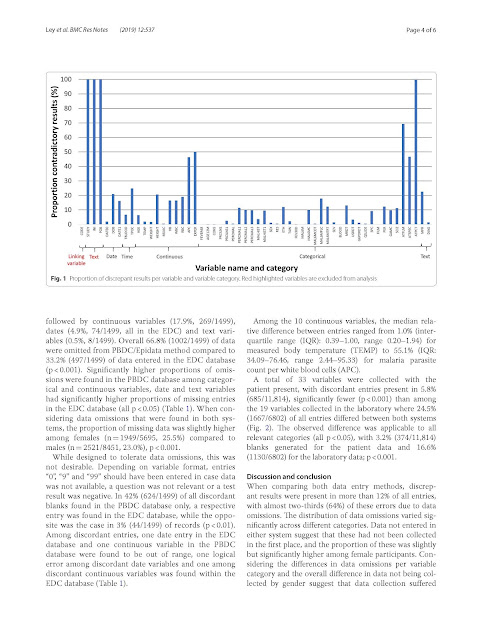BMC Research Notes
Benedikt Ley1* , Komal Raj Rijal2, Jutta Marfurt1, Naba Raj Adhikari2, Megha Raj Banjara2, Upendra Thapa Shrestha2, Kamala Thriemer1, Ric N. Price1,3,4 and Prakash Ghimire2
Benedikt Ley1* , Komal Raj Rijal2, Jutta Marfurt1, Naba Raj Adhikari2, Megha Raj Banjara2, Upendra Thapa Shrestha2, Kamala Thriemer1, Ric N. Price1,3,4 and Prakash Ghimire2
1 Global and Tropical Health Division, Menzies School of Health Research and Charles Darwin University, Darwin, Australia.
2 Central Department of Microbiology, Tribhuvan University, Kirtipur, Kathmandu, Nepal.
3 Mahidol‑Oxford Tropical Medicine Research Unit (MORU), Faculty of Tropical Medicine, Mahidol University, Bangkok, Thailand.
4 Centre for Tropical Medicine and Global Health, Nuffield Department of Clinical Medicine, University of Oxford, Oxford, UK.
Abstract
Objective: Electronic data collection (EDC) has become a suitable alternative to paper based data collection (PBDC) in biomedical research even in resource poor settings. During a survey in Nepal, data were collected using both systems and data entry errors compared between both methods. Collected data were checked for completeness, values outside of realistic ranges, internal logic and date variables for reasonable time frames. Variables were grouped into 5 categories and the number of discordant entries were compared between both systems, overall and per variable category.
Results: Data from 52 variables collected from 358 participants were available. Discrepancies between both data sets were found in 12.6% of all entries (2352/18,616). Differences between data points were identified in 18.0% (643/3580) of continuous variables, 15.8% of time variables (113/716), 13.0% of date variables (140/1074), 12.0% of text variables (86/716), and 10.9% of categorical variables (1370/12,530). Overall 64% (1499/2352) of all discrepancies were due to data omissions, 76.6% (1148/1499) of missing entries were among categorical data. Omissions in PBDC (n = 1002) were twice as frequent as in EDC (n = 497, p < 0.001). Data omissions, specifically among categorical variables were identified as the greatest source of error. If designed accordingly, EDC can address this short fall effectively.
Keywords: Electronic data entry, Paper based data entry, AKVO, Epidata
For Full text: Ley et al. BMC Res Notes (2019) 12:537 https://doi.org/10.1186/s13104-019-4574-8

























